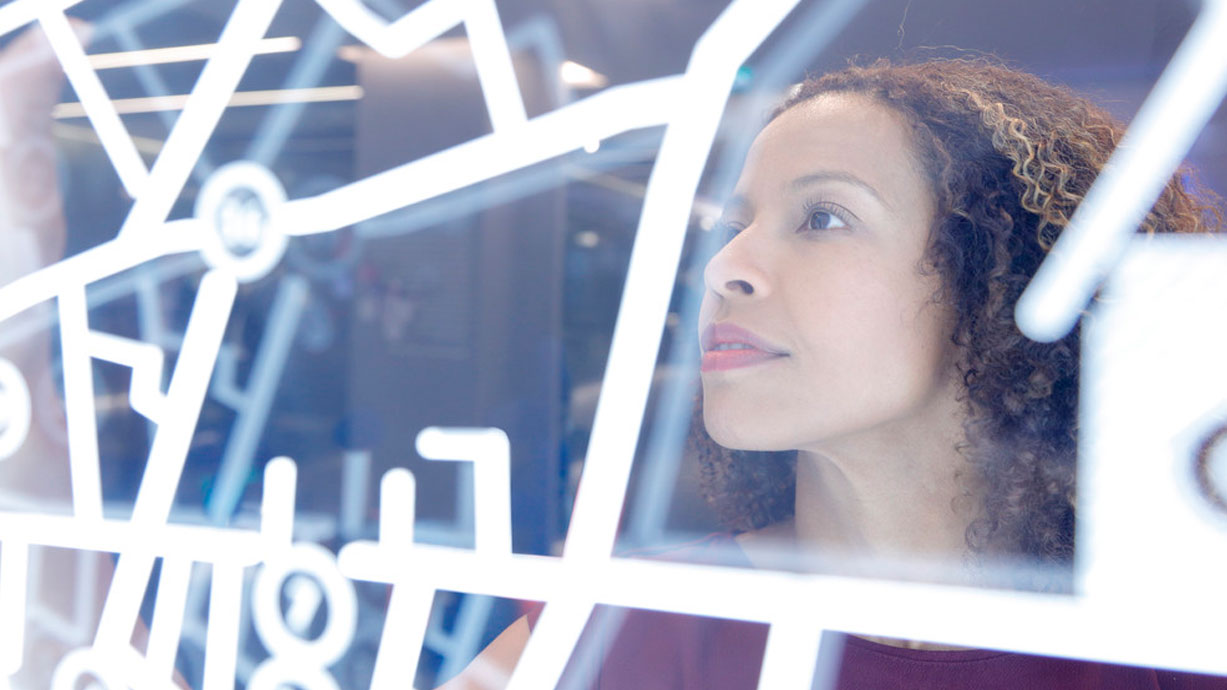Industry 5.0: Restoring the human aspect in the quest for efficiency

It’s been less than a decade since the Fourth Industrial Revolution came into our lives. This revolutionary era – also known as Industry 4.0 – predicted an increasingly interconnected and automated future marked by dramatic advances in robotics, artificial intelligence, cloud computing, 5G networks and the Internet of Things.
Like previous industrial revolutions, it promised to radically transform industries and markets, focusing primarily on automation, digitalization and improved productivity.
But perhaps the most important aspect has often been overlooked – humans.
Now the Fifth Industrial Revolution, or Industry 5.0, looks to rectify that, with a pronounced focus on how to harness these technologies in a more human-centric and sustainable fashion.
At the heart of this new era will be advancements in AI, cloud and connectivity. From a technology perspective, this registers mostly as evolutionary progress. But make no mistake: these various new technologies will have a radical impact in how pervasive they will become in all industrial sectors and everyday life. The revolutionary part is how, and how often, they will be used.
At Nokia Bell Labs, we believe it will have a positive impact on humanity because the focus will now be first and foremost on people.
A user-friendly revolution
The greatest strides in Industry 5.0 could come in the form of companies seizing on these technological advances to benefit not just the enterprise, but also its employees. Worker safety and their overall experiences will be enhanced by the improved collection, processing and sharing of data and information.
For example, digital twins — digital representations of physical spaces, objects and human bodies — will help us better understand and improve real-world situations. In industrial workplaces such as factories, mines, ports and warehouses, this type of sensing capability can inform workers about the movements and routes of autonomous vehicles and find the most efficient and safest routes, thus reducing the likelihood of accidents.
These optimizations can be applied to very large systems to improve, for example, an energy grid, a smart city or even a global network.
Instead of these technologies replacing humans, we will see humans and robots working together with the individual’s wellbeing at the center. People will continue to pursue the tasks and activities at which they are best, such as creative tasks that require skill, intuition and decision making. Robots, on the other hand, will be there to help with the tasks that humans want to do but can’t or those they can do but don’t want to.
In other words, we have entered the age of the cobot – the collaborative robot that helps people perform their jobs better and makes their lives easier. It’s an age where machines and robots augment, rather than replace, the human activities, tasks, intelligence and decision-making.
A Nokia Bell Labs perspective
At Nokia Bell Labs, we have a particularly poignant contribution to make to this shift.
Our dynamic digital twins solution enables real-time monitoring of rapidly changing environments. Our Neural Radiance Fields (NeRF)-based solution is a trained neural network that learns how to represent a space from any viewpoint in real time. It takes camera feeds from drones, robots or fixed cameras and integrates the information into the NeRF representation. This has been successfully tested at both industrial warehouses and sporting arenas.
The dynamic element here is to represent a physical environment and the changes taking place in it. As the space changes, the representation changes with it. In other words, it’s like ChatGPT but for physical spaces. Instead of a large language model, this is a large world model.
Our cloud-enhanced cognitive robotics solution builds an end-to-end offering that advances robot autonomy. It’s been successfully tested at the Nokia factory in Chennai, India. During this trial, the average distance traveled on every robot mission has decreased by 28% and the average time it took a robot to complete a task dropped by 40%.
Our work in quantum technologies will also usher in this new era. By harnessing the properties of single particles, quantum computers will be able to simulate the most complex systems in nature and society, which could, for example, radically transform healthcare research or how we optimize communication networks.
The latter is a perfect example of Industry 5.0’s impact. No one should expect a quantum computer on their desk or any other direct engagement with the technology. But it could still revolutionize many aspects of our world — from medical research and technology innovation to communications, logistics, sustainability and even space exploration.
All in all, it offers a predictive element and a radical new way of improving the human experience.
A new industrial revolution?
Previous industrial revolutions typically came around once every 100 years.
The original industrial revolution beginning in the late 18th century largely replaced hand labor with mechanized production using water and steam power that created factories and the textile industry.
A century later, the second, known as the Technological Revolution, used steel, oil and electric power together with railroad and telegraph networks to create mass production, including the modern production line.
The third, known as the Digital Revolution, saw the emergence of computers, the Internet and the use of electronics to automate production in the late 20th century.
The fourth, coined in 2015 by Chairman of the World Economic Forum Klaus Schwab, foresaw a fusion of technologies that looked to transform entire systems of production, management and governance.
But Industry 5.0 is likely to overlap with its predecessor and come into full swing within just 15 years. The same technologies will be capturing a physical environment and making intelligent decisions about optimizing it. The difference is the optimization will not just be for productivity but also for health, safety, resilience and sustainability.
The Fifth Industrial Revolution should benefit all of us individually in our everyday personal and professional lives. And it should also benefit society and humankind through an increased focused on sustainability and the responsible use of natural resources.